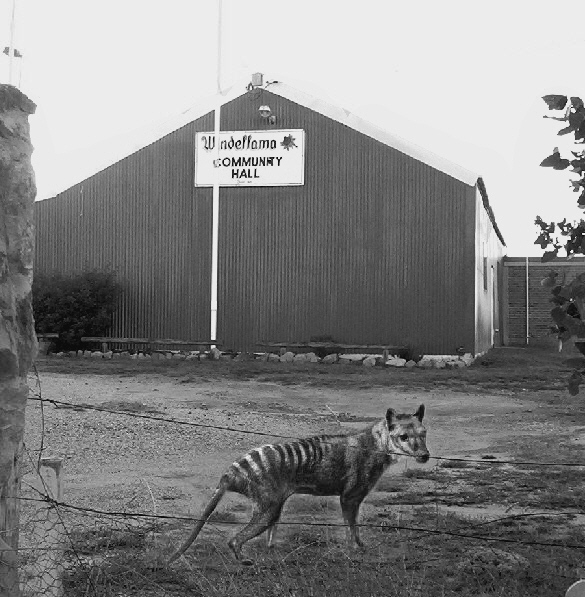
Wild Windellama
by Paul Alessi
May 2005
Tasmanian Tiger ( Thylocenus cynocephalus)
A reward of $ 1.25 million was recently announced
by the Bulletin newspaper which is owned by
Kerry Packer for conclusive proof
that the Tasmanian Tiger is not extinct. Another $1.75 million
was added to
the reward by a Tasmanian tourist group, making the total $3 million.
The
last known Thylocene died in the Beaumaris Zoo in Hobart on the 7th September
1936
( this day of the year is now celebrated as threatened species day in
Australia )
but there have been around 4000 reported sightings since. A quick
scan of the internet turned up
some interesting accounts of sightings not
only from Tasmania but also from mainland Australia.
One lady in particular swears she saw one near a
supermarket in Brighton Le Sands N.S.W. which is not far from
Sydney's
International airport and along the shores of Botany Bay. A Tasmanian
Tiger
roaming suburban Sydney is of course unlikely and what this lady saw
most likely involved a neighbourhood
dog and a couple of youths with spray
cans but Thylocenes did roam mainland
Australia and New Guinea as little as
2,200 years ago and their fossil remains are sometimes
found during
archeological digs or as mummified corpses in caves, the original author of this
column
Dr Carina Clarke once found the dehydrated remains of a Thylocene
whilst exploring a cave beneath the Nullabor
Plain in Western Australia.
Even though there have been Tassie Tiger reports
from as far away as the Northern Territory.
The most likely place for
Thylocenes to have survived on the mainland might be in
an area of remote
wilderness with climate similar to Tasmania, and parts of South Eastern
Australia
definitely fulfill those requirements, there have been reports of
Thylocene and Black Panthers in the forests
of Eastern Victoria and the
Shoalhaven River Gorge has it's own folklore about Black Panthers, Bungonia
Bears and
unknown creatures that make blood curdling screeches in the night.
Parts of the Morton National Park just over the
river gorge from us are extremely rugged and have
never been fully explored,
there are sheer cliffs, steep, scree sided ravines and places
simply
innacessable to man on foot. Windellama's extremely rare "Ice Age Gum"
is a close relative
to some cold climate Tasmanian Eucalypts and maybe our
district shares more than just similar
vegetation with Tasmania. I once had
the rare experience of seeing a wild dingo up close in bush near to
the
Shoalhaven gorge in Windellama, we both stopped in our tracks and stared at each
other for a few moments
then he was silently on his way. I wonder what other
seldom seen animals are out there.
The photo accompanying this article is of course
just a bit of digital mischief and if it were real
I would probably be lying
on a beach somewhere enjoying the reward money but the fact remains
that it
is more than likely Thylocenes roamed Windellama not that long ago.

Copyright Paul Alessi 2005